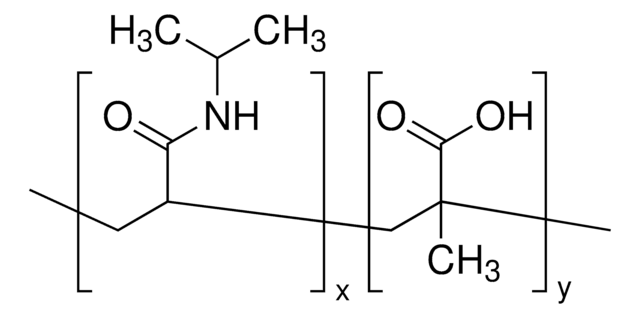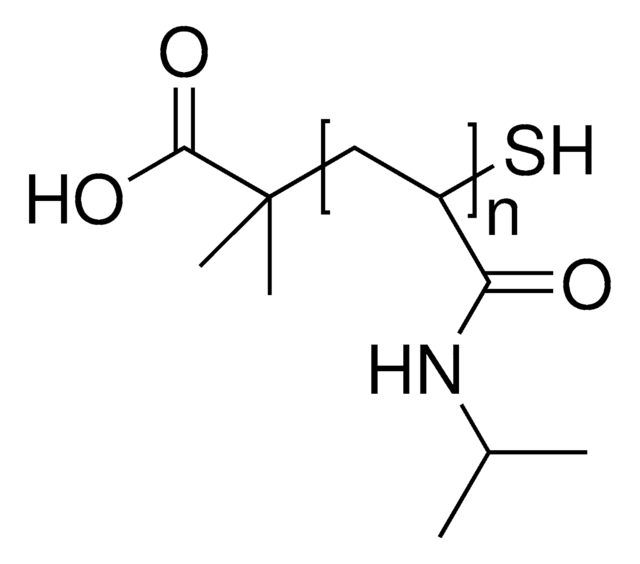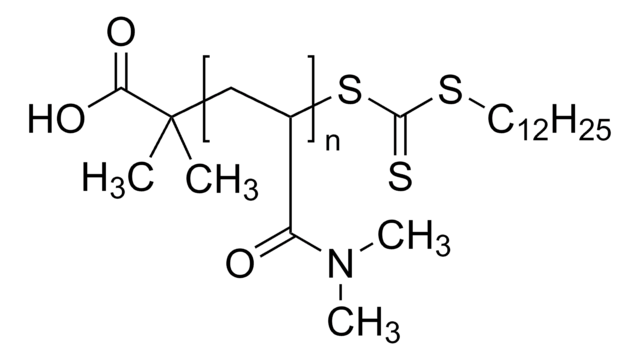901422
Poly(N-isopropylacrylamide)
average Mn 85,000
Synonym(s):
NIPAM polymer, PNIPAM, PolyNIPAM, Polyacrylamide, polyNIPAM
About This Item
Recommended Products
form
crystals
mol wt
Mn 60,000-110,000 Da by MALLS (GPC)
average Mn 85,000
color
white to off-white
mp
96 °C
storage temp.
2-8°C
SMILES string
CC(C)NC(=O)C=C
InChI
1S/C6H11NO/c1-3-5-7-6(8)4-2/h4H,2-3,5H2,1H3,(H,7,8)
InChI key
WDFKEEALECCKTJ-UHFFFAOYSA-N
Looking for similar products? Visit Product Comparison Guide
General description
Application
Storage Class
11 - Combustible Solids
wgk_germany
WGK 1
flash_point_f
Not applicable
flash_point_c
Not applicable
Certificates of Analysis (COA)
Search for Certificates of Analysis (COA) by entering the products Lot/Batch Number. Lot and Batch Numbers can be found on a product’s label following the words ‘Lot’ or ‘Batch’.
Already Own This Product?
Find documentation for the products that you have recently purchased in the Document Library.
Customers Also Viewed
Articles
Professor Mitsuhiro Ebara provides insights on several types of smart nanofiber mesh systems that have been explored for different drug delivery purposes.
Our team of scientists has experience in all areas of research including Life Science, Material Science, Chemical Synthesis, Chromatography, Analytical and many others.
Contact Technical Service








